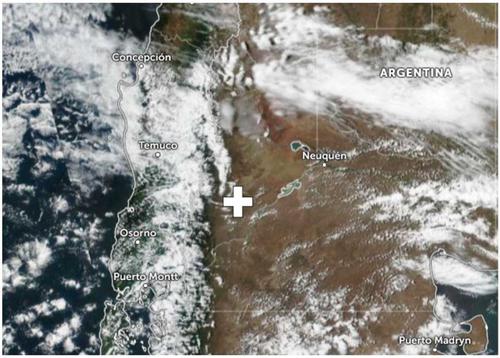Solar Physics ( IF 2.8 ) Pub Date : 2023-12-05 , DOI: 10.1007/s11207-023-02231-5 Liam Edwards , Kaine A. Bunting , Brad Ramsey , Matthew Gunn , Tomos Fearn , Thomas Knight , Gabriel Domingo Muro , Huw Morgan

|
A new instrument was designed to take visible-light (VL) polarized brightness (\(\mathit{pB}\)) observations of the solar corona during the 14 December 2020 total solar eclipse. The instrument, called the Coronal Imaging Polarizer (CIP), consisted of a 16 MP CMOS detector, a linear polarizer housed within a piezoelectric rotation mount, and an f-5.6, 200 mm DSLR lens. Observations were successfully obtained, despite poor weather conditions, for five different exposure times (0.001 s, 0.01 s, 0.1 s, 1 s, and 3 s) at six different orientation angles of the linear polarizer (\(0^{\circ}\), \(30^{\circ}\), \(60^{\circ}\), \(90^{\circ}\), \(120^{\circ}\), and \(150^{\circ}\)). The images were manually aligned using the drift of background stars in the sky and images of different exposure times were combined using a simple signal-to-noise ratio cut. The polarization and brightness of the local sky were also estimated and the observations were subsequently corrected. The \(\mathit{pB}\) of the K-corona was determined using least-squares fitting and radiometric calibration was done relative to the Mauna Loa Solar Observatory (MLSO) K-Cor \(\mathit{pB}\) observations from the day of the eclipse. The \(\mathit{pB}\) data was then inverted to acquire the coronal electron density, \(n_{e}\), for an equatorial streamer and a polar coronal hole, which agreed very well with previous studies. The effect of changing the number of polarizer angles used to compute the \(\mathit{pB}\) is also discussed and it is found that the results vary by up to \(\approx 13\%\) when using all six polarizer angles versus only a select of three angles.
中文翻译:

根据 2020 年 12 月 14 日日全食期间可见光日冕的线性偏振观测得出的电子密度
设计了一种新仪器,用于在 2020 年 12 月 14 日日全食期间对日冕进行可见光 (VL) 偏振亮度 ( \(\mathit{pB}\))观测。该仪器称为冠状成像偏振器(CIP),由 16 MP CMOS 探测器、安装在压电旋转支架内的线性偏振器和 f-5.6、200 毫米 DSLR 镜头组成。尽管天气条件恶劣,但在线性偏振器的六个不同方向角( \( 0^{\circ} \)、\(30^{\circ}\)、\(60^{\circ}\)、\(90^{\circ}\)、\(120^{\circ}\)和\( 150^{\circ}\))。使用天空中背景恒星的漂移来手动对齐图像,并使用简单的信噪比剪切来组合不同曝光时间的图像。还估计了当地天空的偏振和亮度,并随后对观测结果进行了修正。K日冕的\(\mathit{pB}\)使用最小二乘拟合确定,并相对于莫纳罗亚太阳天文台(MLSO) K-Cor \(\mathit{pB}\)观测进行辐射校准从日食之日起。然后对\ (\mathit{pB}\)数据进行反演以获得赤道流光和极地冕洞的日冕电子密度\(n_{e}\),这与之前的研究非常吻合。还讨论了改变用于计算\(\mathit{pB}\)的偏振器角度数量的影响,发现当使用所有六个偏振器时,结果变化高达\(\approx 13\%\)角度与仅选择三个角度的比较。



























 京公网安备 11010802027423号
京公网安备 11010802027423号